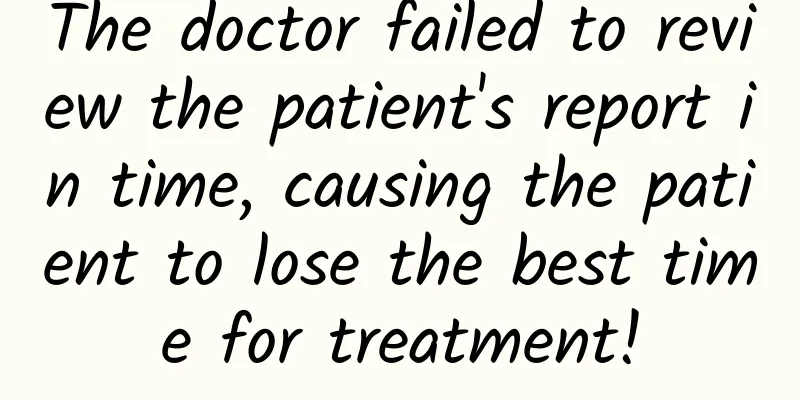Can I have another baby one year after a cesarean section?

|
Due to many factors, women have to undergo cesarean section during childbirth. The female body needs to deal with the sutures, and the requirements for subsequent pregnancy are usually very high. This is related to the health of women and should be given high attention. So, can you get pregnant again one year after cesarean section? Can I get pregnant again one year after a caesarean section? If the cesarean section is done well, there is no infection or other problems after the operation, and the pregnant woman recovers, traditionally speaking, she can get pregnant again in about a year, and there is no need to wait for 2 years or more. A large sample analysis of the article showed that the incidence of uterine rupture after cesarean section is not related to the length of time after the operation, that is, there is no difference in the chance of uterine rupture between pregnancy within 1 year after surgery and pregnancy after 2 years. Many of my patients became pregnant within 1 year after surgery, and the youngest became pregnant again 3 months after surgery. Although it is not recommended to do so, if it is a truly unexpected pregnancy and you really want to have a child, you can still get pregnant again under close monitoring. It is not appropriate to terminate the pregnancy hastily. There are also some older pregnant women who have to wait 2-3 years after surgery before they can get pregnant again. The chance of having a malformed fetus will inadvertently increase significantly during the waiting period. The risk of giving birth to a fool is not as great as the previous pregnancy, which can give birth to a healthy child under the supervision of a doctor. Once you are pregnant, is it really necessary to have another caesarean section? The answer is no. Cesarean section has no benefits for mother and child, and the long-term complications are much higher than for mothers and children who choose natural birth. Therefore, it is recommended to have confidence in trial production. Can I still choose a natural birth after a cesarean section? 1. Look at the condition of the fetus in this pregnancy. In this pregnancy, the fetus is of moderate size, has a good heartbeat, and the pregnant woman's pelvis is not significantly narrow, so a vaginal trial delivery can be considered. If the fetus is very large, it is estimated that natural delivery will be difficult. If the fetal heartbeat condition requires an emergency cesarean section or there are signs of uterine rupture, a cesarean section is required. 2. Check the health status of the pregnant woman. Pregnant women in good physical condition and without indications for cesarean section are encouraged to give birth naturally. If a pregnant woman is too obese, has heart disease, gestational hypertension and other diseases, and cannot undergo natural childbirth, then caesarean section should be considered. Caesarean section is recommended for pregnant women with congenitally narrow pelvis or pelvic deformity caused by acquired trauma who are unable to give birth naturally. If the pregnant woman has a history of multiple caesarean sections or has undergone uterine surgery, such as large uterine surgery, the risk of uterine rupture during natural delivery increases, and caesarean section is recommended. 3. Diagnosis and treatment standards for outpatient clinics of pregnant women giving birth. During the entire natural delivery period, doctors can be present at any time to monitor the delivery of pregnant women and perform outpatient cesarean sections. Those who can be anesthetized immediately and whose cesarean section staff can be present at any time can consider a vaginal trial delivery. Instead, a caesarean section is performed. 4. For pregnant women who had a caesarean section for the first time, whether to choose vaginal trial delivery for the second time is mainly due to the concern of uterine rupture. According to scientific research, a history of natural childbirth can significantly reduce the risk of uterine rupture. The longer the interval between two deliveries, the lower the risk of uterine rupture. Women whose most recent delivery was less than 24 months ago have a 2- to 3-fold higher risk of uterine rupture during vaginal delivery than those whose most recent delivery was more than 24 months ago. |
<<: Cesarean section milk-raising confinement meal
>>: How long does it take for colposcopy biopsy results to come out?
Recommend
How to eat dried scallops? Can dried scallops still be eaten after being stored for 3 years?
Dried scallops are a kind of food made by removin...
What does an ectopic pregnancy feel like?
If women have vaginal bleeding and abdominal pain...
Diagram of the position of the uterus at 15 weeks of pregnancy
After getting married, all women hope to have a b...
Another fitness move is going viral! A man's hemorrhoids ruptured after trying it! Doctor: Not suitable for everyone...
In the movie, Ip Man is a master of martial arts,...
Women, please read carefully the precautions before leep knife surgery
In order to treat cervical erosion, many women ne...
Can diabetes cause blindness? It's true!
"The elderly in my family has had diabetes f...
Can I hula hoop during my period?
Women can do some simple exercises during menstru...
Can I eat cantaloupe after miscarriage?
You should not eat raw or cold food after miscarr...
What if the leucorrhea is thick and looks like snot?
Vaginal secretions, as a common secretion of wome...
My boyfriend is having sex with me, why?
There are many precautions when men and women hav...
Will the areola get bigger before menstruation?
The issue of areola size is also a concern for ma...
The difference between early miscarriage and menstruation
Most female friends have relatively regular menst...
A few days after the end of the period is the safe period
The safe menstruation period is generally calcula...
I had sex when there was still some bleeding during my period.
Sexual life is an act that occurs between couples...
Can I eat oatmeal during my period?
Oatmeal is a common food in our lives, and many p...









